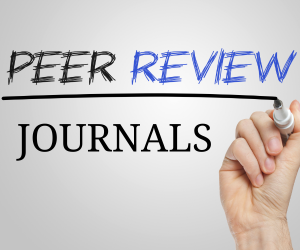ASSOCIATION OF VITAMIN D DEFICIENCY TO SEVERITY OF COVID-19: A SYSTEMATIC REVIEW
DOI:
https://doi.org/10.53555/nnmhs.v9i3.1617Keywords:
Calcitriol 1, 25(OHD), COVID-19, Inflammation, Vitamin D, SeverityAbstract
As a pathogen invades, phagocytes quickly respond, but the adaptive immune response is more specific. Antigenrecognizing cytotoxic T cells control this immunological response. Cytotoxic T cells kill infection. These cells participate in humoral, antiparasitic, and antiviral immune responses. Balanced nutrition helps the immune system fight infections and neoplastic cells. Research describes how the immune system and defensive mechanisms defend the body from invaders, especially with optimal diet. Respiratory tract infections can worsen chronic diseases, increasing mortality. Vitamin D reduces respiratory infections, including pneumonia, through numerous mechanisms. UVB exposure converts 7-dehydrocholesterol into fat-soluble vitamin D. The liver converts it to 25(OH)D, which the kidneys or other organs convert to calcitriol 1, 25(OHD). Bones and teeth need vitamin D. Vitamin D aids bone metabolism, gastrointestinal calcium and phosphorus absorption, and the immune system, according to in vitro research. Most studies indicate COVID-19 severity with vitamin D levels below 12. Vitamin D pills benefit COVID-19 patients.
References
World Health Organization (WHO). Novel Coronavirus (2019-nCoV): situation report. Geneva; 2020.
Kandula P; Agarwal J. Proteinuria and hypertension with tyrosine kinase inhibitors. Kidney Int. 2011;80(2):1271– 7.
Akhtar S; Das JK; Ismail T; et al. Nutritional perspectives for the prevention and mitigation of COVID-19. Nutr Rev. 2020;
Rozga M; Cheng FW; Monoloney L; et al. Effects of Micronutrients or Conditional Amino Acids on COVID-19Related Outcomes: An Evidence Analysis Center Scoping Review. J Acad Nutr Diet. 2020;
Kongsbak M, Levring TB, Geisler C, von Essen MR. The vitamin d receptor and T cell function. Front Immunol. 2013;4:148.
Maghbooli Z, Sahraian MA, Ebrahimi M, Pazoki M, Kafan S, Tabriz HM, et al. Vitamin D sufficiency, a serum 25hydroxyvitamin D at least 30 ng/mL reduced risk for adverse clinical outcomes in patients with COVID-19 infection. PLoS One [Internet] 2020 Sep 25;15(9):e0239799. Available from: https://doi.org/10.1371/journal.pone.0239799
AlSafar H, Grant WB, Hijazi R, Uddin M, Alkaabi N, Tay G, et al. COVID-19 Disease Severity and Death in Relation to Vitamin D Status among SARS-CoV-2-Positive UAE Residents. Nutrients. 2021 May;13(5).
D’Avolio A, Avataneo V, Manca A, Cusato J, De Nicolò A, Lucchini R, et al. 25-Hydroxyvitamin D concentrations are lower in patients with positive PCR for SARS-CoV-2. Nutrients. 2020;12(5):1359.
Panagiotou G, Tee SA, Ihsan Y, Athar W, Marchitelli G, Kelly D, et al. Low serum 25‐hydroxyvitamin D (25 [OH] D) levels in patients hospitalized with COVID‐19 are associated with greater disease severity. Clin Endocrinol (Oxf). 2020;93(4):508.
Carpagnano GE, Di Lecce V, Quaranta VN, Zito A, Buonamico E, Capozza E, et al. Vitamin D deficiency as a predictor of poor prognosis in patients with acute respiratory failure due to COVID-19. J Endocrinol Invest. 2021;44(4):765–71.
Murai IH, Fernandes AL, Sales LP, Pinto AJ, Goessler KF, Duran CSC, et al. Effect of a Single High Dose of Vitamin D3 on Hospital Length of Stay in Patients With Moderate to Severe COVID-19: A Randomized Clinical Trial. JAMA. 2021 Mar;325(11):1053–60.
Sabico S, Enani MA, Sheshah E, Aljohani NJ, Aldisi DA, Alotaibi NH, et al. Effects of a 2-Week 5000 IU versus 1000 IU Vitamin D3 Supplementation on Recovery of Symptoms in Patients with Mild to Moderate Covid-19: A Randomized Clinical Trial. Nutrients. 2021 Jun;13(7).
Saponaro F, Franzini M, Okoye C, Antognoli R, Campi B, Scalese M, et al. Is There a Crucial Link Between Vitamin D Status and Inflammatory Response in Patients With COVID-19? Front Immunol. 2021;12:745713.
Chen Y, Zhang J, Ge X, Du J, Deb DK, Li YC. Vitamin D receptor inhibits nuclear factor κB activation by interacting with IκB kinase β protein. J Biol Chem. 2013;288(27):19450–8.
Wang T-T, Nestel FP, Bourdeau V, Nagai Y, Wang Q, Liao J, et al. Cutting edge: 1, 25-dihydroxyvitamin D3 is a direct inducer of antimicrobial peptide gene expression. J Immunol. 2004;173(5):2909–12.
Holick MF. The vitamin D deficiency pandemic: Approaches for diagnosis, treatment and prevention. Rev Endocr Metab Disord. 2017;18:153–65.
Lanham New SA, Webb AR, Cashman KD, et al. Vitamin D and SARS-CoV-2 virus/COVID-19 disease. BMJ Nutr Prev Heal. 2020;1–5.
Grant WB, Lahore H, McDonnell SL, et al. Evidence that Vitamin D Supplementation Could Reduce Risk of Influenza and COVID-19 Infections and Deaths. Nutrients. 2020;12:1–19.
Jolliffe DA, Greenberg L, Hooper RL, Mathyssen C, Rafiq R, de Jongh RT, et al. Vitamin D to prevent exacerbations of COPD: systematic review and meta-analysis of individual participant data from randomised controlled trials. Thorax. 2019 Apr;74(4):337–45.
Lehouck A, Mathieu C, Carremans C, Baeke F, Verhaegen J, Van Eldere J, et al. High doses of vitamin D to reduce exacerbations in chronic obstructive pulmonary disease: a randomized trial. Ann Intern Med. 2012;156(2):105–14.
Leikina E, Delanoe-Ayari H, Melikov K, Cho M-S, Chen A, Waring AJ, et al. Carbohydrate-binding molecules inhibit viral fusion and entry by crosslinking membrane glycoproteins. Nat Immunol. 2005;6(10):995–1001.
Dürr UHN, Sudheendra US, Ramamoorthy A. LL-37, the only human member of the cathelicidin family of antimicrobial peptides. Biochim Biophys Acta (BBA)-Biomembranes. 2006;1758(9):1408–25.
Mirzadeh M; Khedmat L. Pregnant women in the exposure to COVID-19 infection outbreak: the unseen risk factors and preventive healthcare patterns. J Matern Neonatal Med. 2020;
Downloads
Published
Issue
Section
License

This work is licensed under a Creative Commons Attribution 4.0 International License.
Licensing
Ninety Nine Publication publishes articles under the Creative Commons Attribution 4.0 International License (CC BY 4.0). This licensing allows for any use of the work, provided the original author(s) and source are credited, thereby facilitating the free exchange and use of research for the advancement of knowledge.
Detailed Licensing Terms
Attribution (BY): Users must give appropriate credit, provide a link to the license, and indicate if changes were made. Users may do so in any reasonable manner, but not in any way that suggests the licensor endorses them or their use.
No Additional Restrictions: Users may not apply legal terms or technological measures that legally restrict others from doing anything the license permits.





